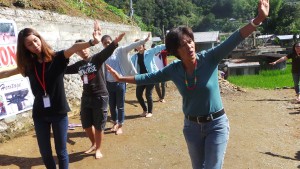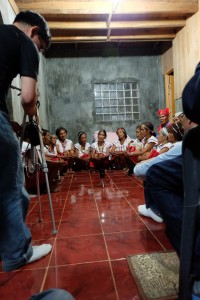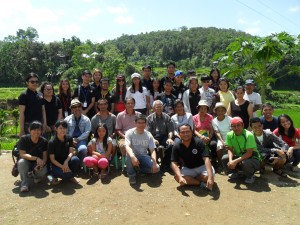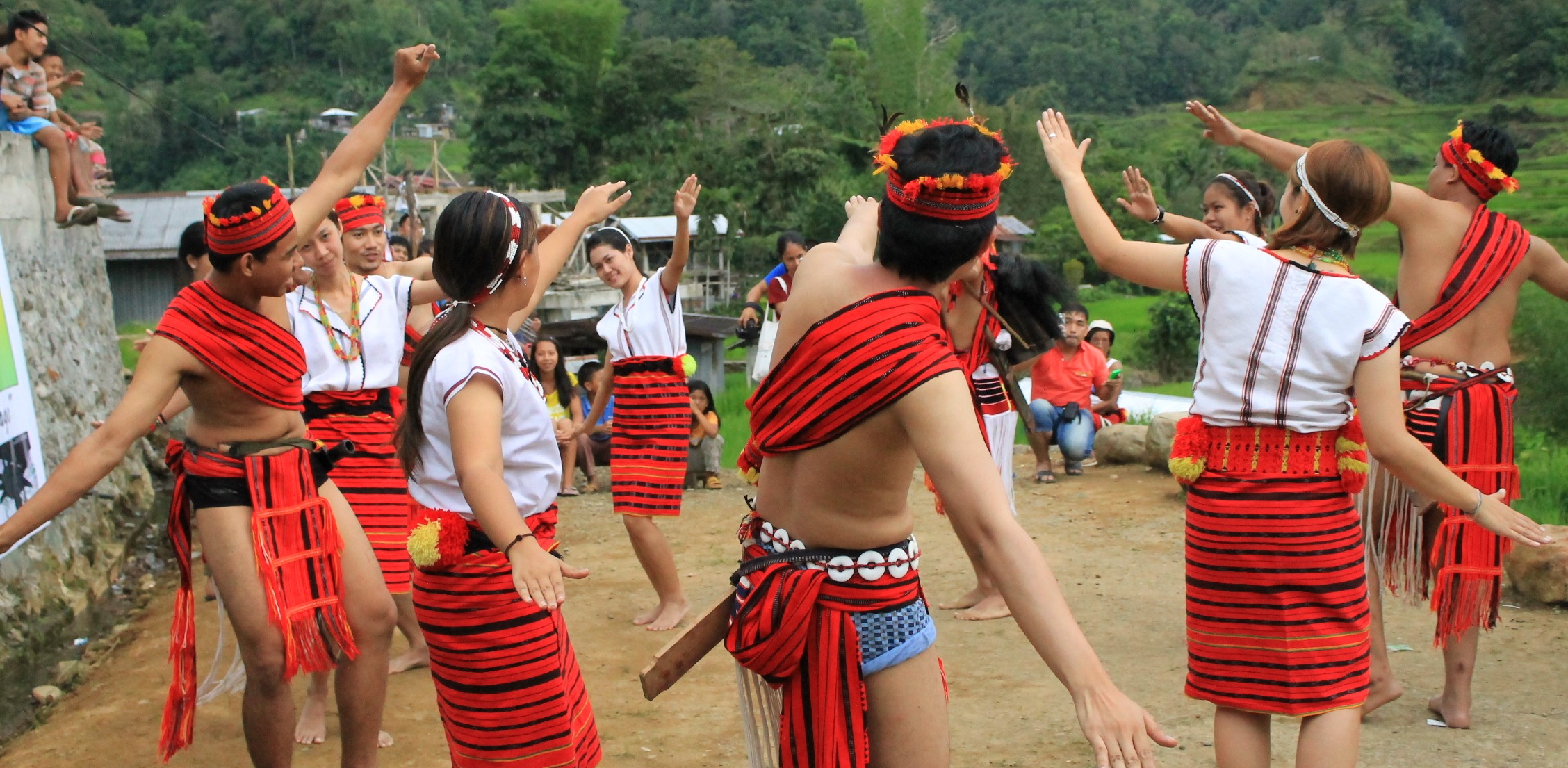
On May 2-4, 2014, the UP Center for Ethnomusicology (UPCE) and the Srinakharinwirot University (SWU) from Bangkok, Thailand participated in the Field Exchange (FieldEx) Project held in Poblacion, Hingyon, Ifugao. FieldEx is a field research project between the UPCE and a partner institution from Laon-Laon, a network-forum of Music Research Centers in Asia. After jointly conducting field research, the institutions provide copies of the data to each other, thus, exchanging information.
The Field Ex 2014 team was composed of nine UPCE staff, three faculty and 16 students from SWU. The team was led by Dr. Verne de la Peña, Head Researcher, and directed by Dr. Ramon P. Santos, then Executive Director of the UPCE. The goal was to conduct field research and document hudhud, an Ifugao epic which was inscribed by UNESCO as one of the Intangible Cultural Heritage of the World. For the project, the group coordinated with a local organization Adimayku Association, who also served as informants during the research.

The group arrived in Hingyon on May 2, and the morning was spent going around Brgy. Poblacion, Hingyon and getting to know the locals. In the afternoon, the group headed towards the Municipal Gym at Brgy. Bitu for the Cultural Performance prepared by Adimayku. On the evening of the same day, the first hudhud recording session was held in the home of Mr. Tony Tupong, President of Adimayku. The hudhud episode recorded is called “Aliguyon and Aginaya danak-amtalaw ad bunwitan”, which tells the story of Aliguyon, son of Dulnuan and Aginaya.
The second day was dedicated to the Ifugao Music and Dance Workshop for the SWU Ethnomusicology graduate students. Aside from learning how to play gangha (flat gongs) and perform the traditional dance, they were given the rare opportunity to wear the Ifugao traditional attire and accessories. A music and dance recital was held by SWU students as their culminating activity for the workshop. Dr. Santos, Dr. De la Peña, Dr. Manop Wissutipat (Professor at SWU), Mr. Tony Tupong, and Mr. Roy Tupong served as the panel fort the recital.
During the SWU ritual, the rest of the Field Ex team continued with the documentation of hudhud, including the profiles of some munhudhud (hudhud singers). Two recording sessions was also held on that day to continue the hudhud story.
On the last day of FieldEx, the SWU students visited the traditional Ifugao house of Bugan Dinamling, one of the munhaw-e (soloist during Hudhud singing). Bugan is also a weaver who uses a traditional back-strap loom. She demonstrated how the loom works. Mr. Roy who accompanied the group also used the visit to give a small lecture on the parts of the traditional Ifugao house. In the afternoon, the documentation of the hudhud was commenced to record the last part of the hudhud story. A liwliwa was also sung by the singers to say a prayer of safe travel for the researchers. Before the group left for Hingyon, the team gave tokens of appreciation to Adimayku for their hospitality and participation in the FieldEx project.

At the end of the project, one whole hudhud story was documented. Videos from the Performances from the Cultural Show were also taken. These videos include singing of the liwliwa, baltung and taltalya; playing of musical instruments such as the tungali (small reed instrument), bi-ung (jew’s harp) and patting (board zither); performance of the Ifugao native dance; and the re-enactment of Lutud di Bulul (ritual for blessing a new bulul) and dallung (ritual).
Currently, data of the FieldEx 2014 is still being processed. While FieldEx data are still being processed and data verification has not yet been conducted, interested researchers may still accessed them in the UPCE Archives.

